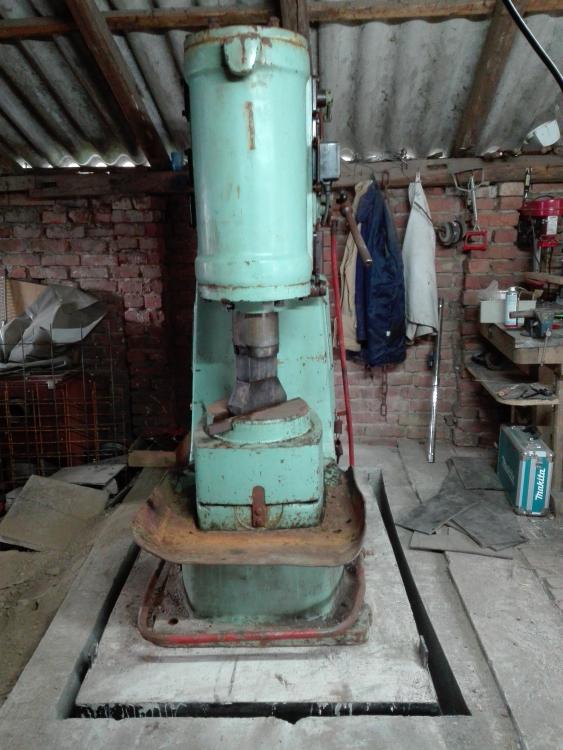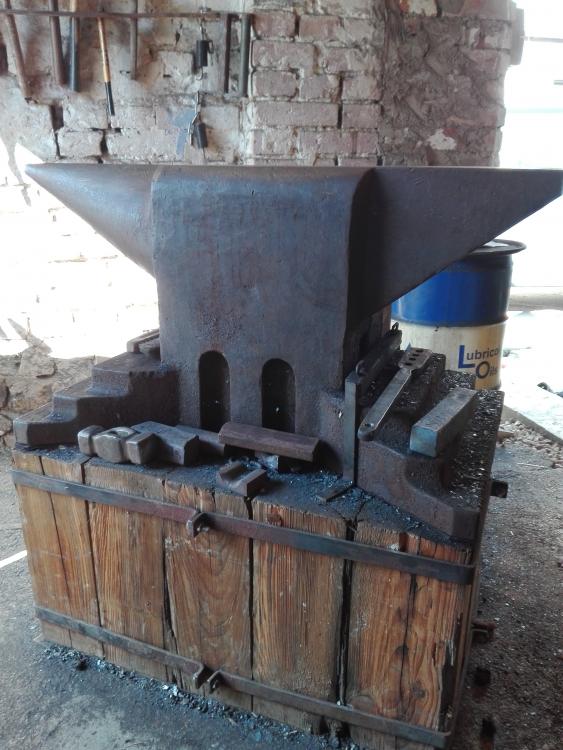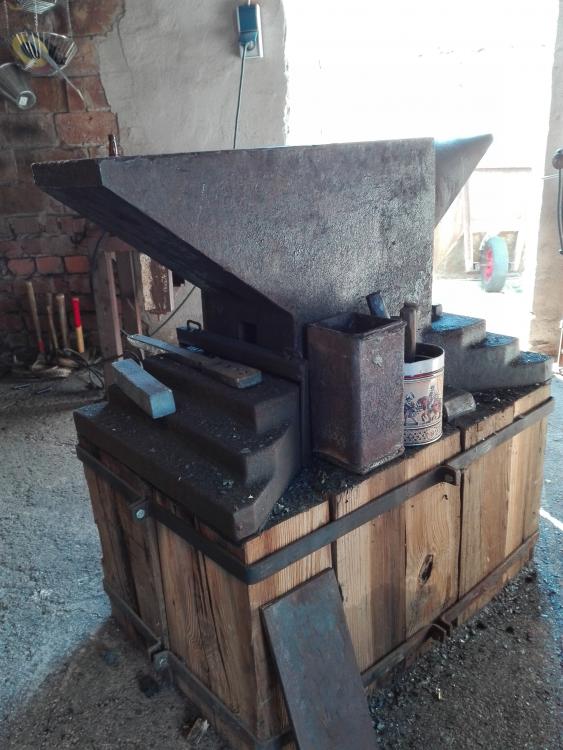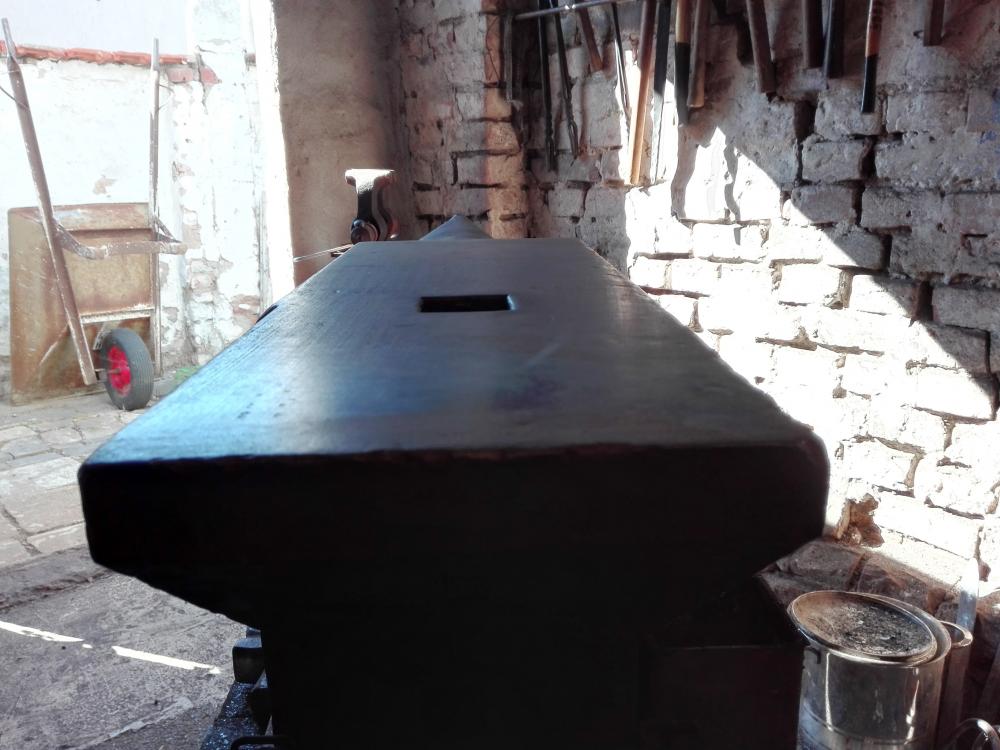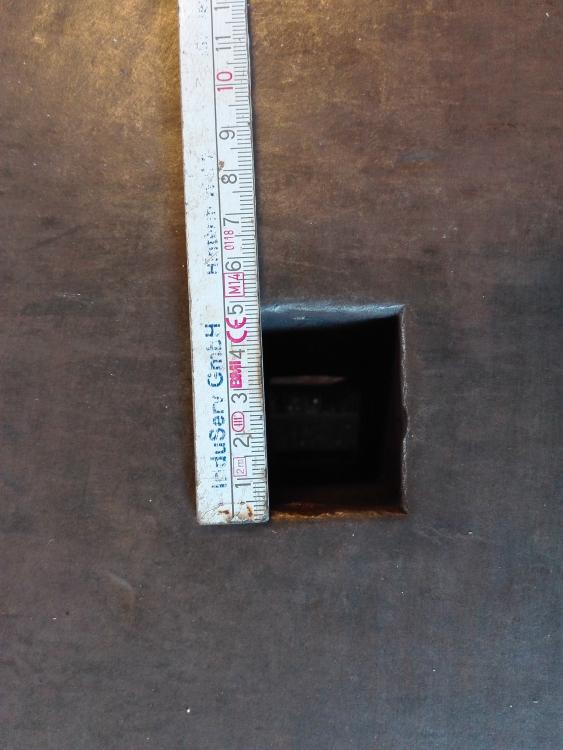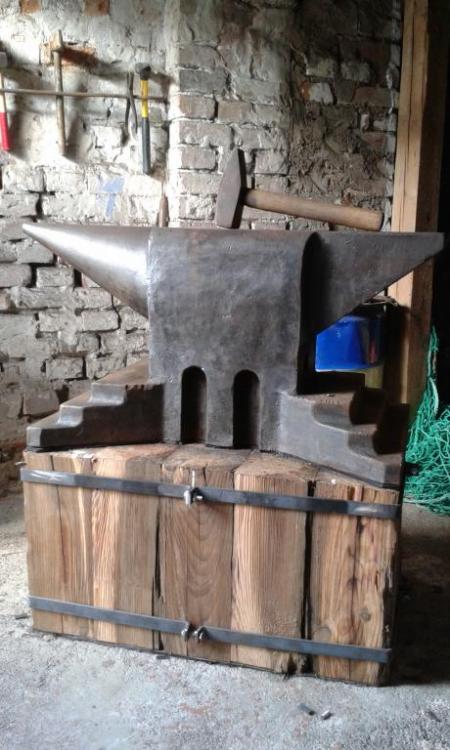-
Posts
69 -
Joined
-
Last visited
Content Type
Profiles
Forums
Articles
Gallery
Downloads
Events
Everything posted by c.baum
-
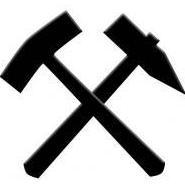
tire hammer die heat treatment
c.baum replied to canada goose's topic in Heat Treating, general discussion
4140 (or 42CrMo4) is a pretty undemanding steel. Just heat up to 820-880°C (light red), soak for 10-15 min and quench in water or oil. Don't forget to stop the quenching at 70°C and to temper immediately. 400°C is pretty hard to tell by annealing colors. I made some tolls of 4140 by quenching in water an annealing in the kitchen oven at full power. It worked really good. As i said the steel is really undemanding and pardons a lot of mistreatment. -
Hi folks, I've got a little cute power hammer (pics see below) with a 165 lb ram. The only dies i have are simple flat dies. The cutie was built in 1978 in Russia so there are no other original dies available. Other dies from recent manufacturers with the same ram mass are much too small. So I got the hint to use hand tools but the hammer has so much power that i can't hold any tool workable. That's why I tried to make some dies i can mount on the original ones. I took some 10mm steel plate, fitted it to the dies and welded a half cutted 50mm rod on it to build a drawing die. I tried to "clamp" the DIY ones an the dies with screws, but the one on the ram just didn't want to hold. So now I'm searching for two things: 1) Methods for fastening the DIY dies. How do you fasten your selfmade ones? 2) Shapes of workable dies. Which shapes of dies do you use wherefor? I'm really dying to see you creations! Many thanks in advance!!!!
-

continuous cooling transformation diagram
c.baum replied to c.baum's topic in Heat Treating, general discussion
I actually got the following information: water does 200 K/s, oil 100 K/s. The "source" doesn't say which kind of oil. But after thinking about the whole thing i don't know if it is that simple. Quenching a thing with a high mass will take longer cause there's more heat saved in the core beeing conducted to the outside, so in my eyes you can't say "quenching in water at 800°C takes 4 sec". Seems to be a bit more difficult... -
Sounds like your anvil might be made of high chromium content steel. Which is not hardenable. Welding on a already hardened plate may destroy the hardening of the plate. Welding such steel is difficult as well. If you dare to weld a plate of C45 on it, you maybe want to harden it afterwards. Another way could be to use welding electrodes for hardfacing. I've done this on my old anvil a few year ago. Really good results but requires good welding skills.
-

continuous cooling transformation diagram
c.baum replied to c.baum's topic in Heat Treating, general discussion
Nice info, never heard of that. But it still is just a relation. Many thanks anyway! -

continuous cooling transformation diagram
c.baum posted a topic in Heat Treating, general discussion
Hi folks, got a question concerning the cooling times in CCT. If you have a look at the diagram there are several curves showing the composition after different cooling speeds. Everything ok for me but how do i know how fast a cooling medium does the cooling? Are there any rough rules of thumb (e.g. cooling in oil does xxx K/s, cooling in water yyy K/s,...)? Many thanks in advance!!! -
Northern tip of Thüringen, city named Sondershausen. The germanische Nationalmuseum is in Nürnberg, about 3.5 hours ride. Sure worth the trip as soon as my son is old enough for a weekend trip. Please keep in mind that under soviet occupation and during GDR there was no interest for conserving historical building, quite the contrary those buildings were quite often teared down to clear the space for new infrastructure. Of course there are still old castles, but most of them have been restored after the Wende.
-
Well, on account of the high command following some more pics of my anvil. Sorry for the mess in the background. I definitely need clean my smithy up. The anvil is a bit rusty as everything will get after it spend some time in a salt mine. The face is absolutely plain. Just the edges are partially worn. the hardy hole is about 45x45mm. Pretty difficult to buy hardy tools. Fortunately the air hammer runs perfectly so i'll soon try to forge a hot cut hardy.
-
Hey folks, got a question. My beloved wife asked me to make a grid for our dogs car crate (to separate the dogs). Well, i simply punched a few holes into a flat stock and inserted round stock through 'em. To avoid the flat stock from gliding downwards i simply did some welding spots. Works fine since no one will ever see the grid but the dogs. Is there another more "blacksmithing" way to solve this problem? Thx!
-
Yep, good old russian quality made in 1978. Just replaced some sealing, new electric switches an so forth an the baby worked!! Most work was to build the foundation (my smithy is situated in the middle of a small village) and mounting the hammer on it (no possibility to lift it with a crane or so and it weighs 3.2 tons).
-
Many thanks! It's been a really really good deal. I have the Anvil for about two years now, so you can imagine that the whole thing is still worth a story among the pitmen
-
@Kevin_Olson the anvil face is about 195mmx890mm incl. horn. price see following story. @ThomasPowers Well, i'm a mining engineer in a former potash mine. The mine exists since 1895, and till 1990 it produced about 1.5 Mio tons potash a year. As you can imagine it is a pretty large mine, and so they had almost everything subsurface. So the smithy was subsurface too (2 coal forges, 2 anvils, a 165 lb air hammer) cause they made nearly every tool theirself. After the german reunification the mine was about to be closed completely. To cut a long story short they fortunately managed to build up a production of rock salt for road deicing. Nowadays where you can buy anything no one needs a smithy in a mine. And given that the smithy hasn't been used since 1990 the maintenance supervisor decided to dump the smithy full with salt. A good friend and coworker of mine heard of that and we could convince him to "sell" the anvils and the air hammer to me. I paid in summary about US$500 to the supervisor and the maintenance brigade could pay their christmas party. A good deal in my eyes
-
-
Yes, exatcly,I don't mean the commonly known colours after tempering steel. I can't remember when of by whom i was told, but i've got something in my mind like: quench steel in a water allum mixture and the steel will get a fuchsia colour. May that be possible? Anybody who has experience with it? Many thanx!
-
****, who the **** wrote that yesterday?! :D I have to apologize myselfe for that!!! Of course charcoal is useful to forge weld. @ThomasPower: I think that's the reason. My forge is designed for coal. I tried charcoal, because it defenitely has some advantages over smith coal. But it did not work very well. Not hot enough and a enormous charcoal consumption. Maybe to high airflow!? And the handling of the very variable size of the coalpieces didn't seem workable to me. @Gendry Where do you get all the wood for the charcoal fabrication? Well, I hope for your indulgence towards my mistake!
-
Hi Gendry, nice setup! Pretty "homemade", but if it works ... Here some thoughts for my part: 1) So you make your own charcoal. Cool! But you should keep in mind, that charcoal won't reach the right temperature for forge welding an so on. If you'd like to use smithy coal, you will need some improvements. But this depends on your ambitions. 2) Your "anvil" really doesn't look safe in my eyes. Better you get a real one. So much things can go wrong with your "setup". 3) Your forge needs some general improvements: the egde of your forge is pretty much higher than the charcoal level. This causes that your working piece is laid inclined in your firebed. Larger pieces won't heat up evenly. On the other hand the general depth of your forge seems to be good (3-4 inches might be ideal). So you should work with a higher charcoal level. Particulary if you later want to forge alloyed steel. 4) I totally agree with Gergely. You need some shade 5) Concerning the tools: Your first "project" should be to forge a tong. It's a great chance to prove your skills and the selfmade one will do the job much better than the current one ;). It is also advisable to use a blacksmith hammer. Those hammers have a rounded face so they won't leave marks on the piece your work on. I think thats enough for now. To be honest: if your setup works as you want it to, it's fine. But please get an other anvil :D! If you've got questions, don't hesitate to ask! There are no silly questions, just silly answers ;) Christian
-

BP1051 Calculations for holes, punching, tools, and measurements marking
c.baum commented on Hofi's article in Uri Hofi Series
Tried to transcribe the calculation to the metric system. Works! Many thanks!

